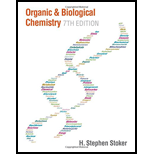
Organic And Biological Chemistry
7th Edition
ISBN: 9781305081079
Author: STOKER, H. Stephen (howard Stephen)
Publisher: Cengage Learning,
expand_more
expand_more
format_list_bulleted
Textbook Question
Chapter 3, Problem 3.97EP
Assign a common name to each of the ethers in Problem 14-95.

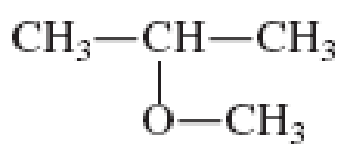
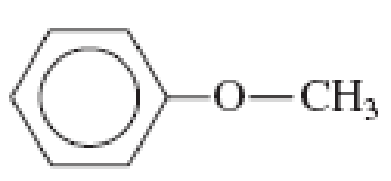
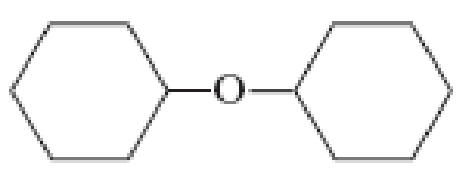
Expert Solution & Answer
Trending nowThis is a popular solution!

Chapter 3 Solutions
Organic And Biological Chemistry
Ch. 3.1 - Prob. 1QQCh. 3.1 - Prob. 2QQCh. 3.2 - Prob. 1QQCh. 3.2 - Prob. 2QQCh. 3.2 - Prob. 3QQCh. 3.3 - Prob. 1QQCh. 3.3 - Prob. 2QQCh. 3.3 - Prob. 3QQCh. 3.3 - Prob. 4QQCh. 3.4 - Prob. 1QQ
Ch. 3.4 - Prob. 2QQCh. 3.4 - Prob. 3QQCh. 3.5 - Prob. 1QQCh. 3.5 - Prob. 2QQCh. 3.5 - Prob. 3QQCh. 3.5 - Prob. 4QQCh. 3.6 - Prob. 1QQCh. 3.6 - Prob. 2QQCh. 3.6 - Prob. 3QQCh. 3.7 - Prob. 1QQCh. 3.7 - Prob. 2QQCh. 3.8 - Prob. 1QQCh. 3.8 - Prob. 2QQCh. 3.9 - Prob. 1QQCh. 3.9 - Prob. 2QQCh. 3.9 - Prob. 3QQCh. 3.9 - Prob. 4QQCh. 3.9 - Prob. 5QQCh. 3.9 - Prob. 6QQCh. 3.10 - Prob. 1QQCh. 3.10 - Prob. 2QQCh. 3.11 - Prob. 1QQCh. 3.11 - Prob. 2QQCh. 3.11 - Prob. 3QQCh. 3.12 - Prob. 1QQCh. 3.12 - Prob. 2QQCh. 3.13 - Prob. 1QQCh. 3.13 - Prob. 2QQCh. 3.13 - Prob. 3QQCh. 3.14 - Prob. 1QQCh. 3.14 - Prob. 2QQCh. 3.14 - Prob. 3QQCh. 3.15 - Prob. 1QQCh. 3.15 - Prob. 2QQCh. 3.15 - Prob. 3QQCh. 3.15 - Prob. 4QQCh. 3.16 - Prob. 1QQCh. 3.16 - Prob. 2QQCh. 3.17 - Prob. 1QQCh. 3.17 - Prob. 2QQCh. 3.17 - Prob. 3QQCh. 3.18 - Prob. 1QQCh. 3.18 - Prob. 2QQCh. 3.18 - Prob. 3QQCh. 3.19 - Prob. 1QQCh. 3.19 - Prob. 2QQCh. 3.20 - Prob. 1QQCh. 3.20 - Prob. 2QQCh. 3.20 - Prob. 3QQCh. 3.20 - Prob. 4QQCh. 3.20 - Prob. 5QQCh. 3.21 - Prob. 1QQCh. 3.21 - Prob. 2QQCh. 3.21 - Prob. 3QQCh. 3.21 - Prob. 4QQCh. 3.21 - Prob. 5QQCh. 3 - Prob. 3.1EPCh. 3 - Indicate whether or not each of the following...Ch. 3 - Prob. 3.3EPCh. 3 - Prob. 3.4EPCh. 3 - Prob. 3.5EPCh. 3 - Prob. 3.6EPCh. 3 - Prob. 3.7EPCh. 3 - Prob. 3.8EPCh. 3 - Prob. 3.9EPCh. 3 - Prob. 3.10EPCh. 3 - Write a condensed structural formula for each of...Ch. 3 - Write a condensed structural formula for each of...Ch. 3 - Prob. 3.13EPCh. 3 - Prob. 3.14EPCh. 3 - Prob. 3.15EPCh. 3 - Prob. 3.16EPCh. 3 - Prob. 3.17EPCh. 3 - Prob. 3.18EPCh. 3 - Prob. 3.19EPCh. 3 - Prob. 3.20EPCh. 3 - Prob. 3.21EPCh. 3 - Prob. 3.22EPCh. 3 - Prob. 3.23EPCh. 3 - Prob. 3.24EPCh. 3 - Prob. 3.25EPCh. 3 - Prob. 3.26EPCh. 3 - Prob. 3.27EPCh. 3 - Prob. 3.28EPCh. 3 - Prob. 3.29EPCh. 3 - Prob. 3.30EPCh. 3 - Give the IUPAC name of the alcohol that fits each...Ch. 3 - Prob. 3.32EPCh. 3 - Prob. 3.33EPCh. 3 - Prob. 3.34EPCh. 3 - Prob. 3.35EPCh. 3 - Prob. 3.36EPCh. 3 - Prob. 3.37EPCh. 3 - Which member of each of the following pairs of...Ch. 3 - Prob. 3.39EPCh. 3 - Which member of each of the following pairs of...Ch. 3 - Determine the maximum number of hydrogen bonds...Ch. 3 - Prob. 3.42EPCh. 3 - Prob. 3.43EPCh. 3 - Prob. 3.44EPCh. 3 - Prob. 3.45EPCh. 3 - Prob. 3.46EPCh. 3 - Classify each of the following alcohols as a...Ch. 3 - Classify each of the following alcohols as a...Ch. 3 - Classify each of the following alcohols as a...Ch. 3 - Classify each of the following alcohols as a...Ch. 3 - Prob. 3.51EPCh. 3 - Prob. 3.52EPCh. 3 - Prob. 3.53EPCh. 3 - Prob. 3.54EPCh. 3 - Prob. 3.55EPCh. 3 - Prob. 3.56EPCh. 3 - Prob. 3.57EPCh. 3 - Prob. 3.58EPCh. 3 - Prob. 3.59EPCh. 3 - Prob. 3.60EPCh. 3 - The alcohol 2,2-dimethyl-1-butanol cannot be...Ch. 3 - Prob. 3.62EPCh. 3 - Prob. 3.63EPCh. 3 - Prob. 3.64EPCh. 3 - Prob. 3.65EPCh. 3 - Prob. 3.66EPCh. 3 - Prob. 3.67EPCh. 3 - Prob. 3.68EPCh. 3 - Prob. 3.69EPCh. 3 - Prob. 3.70EPCh. 3 - Prob. 3.71EPCh. 3 - Prob. 3.72EPCh. 3 - Prob. 3.73EPCh. 3 - Prob. 3.74EPCh. 3 - Prob. 3.75EPCh. 3 - Prob. 3.76EPCh. 3 - Prob. 3.77EPCh. 3 - Prob. 3.78EPCh. 3 - Prob. 3.79EPCh. 3 - Prob. 3.80EPCh. 3 - Prob. 3.81EPCh. 3 - Prob. 3.82EPCh. 3 - Prob. 3.83EPCh. 3 - Prob. 3.84EPCh. 3 - Prob. 3.85EPCh. 3 - Prob. 3.86EPCh. 3 - Prob. 3.87EPCh. 3 - Prob. 3.88EPCh. 3 - Prob. 3.89EPCh. 3 - Prob. 3.90EPCh. 3 - Classify each of the following compounds as an...Ch. 3 - Prob. 3.92EPCh. 3 - Draw or write the following for the simplest ether...Ch. 3 - Draw or write the following for the simplest ether...Ch. 3 - Prob. 3.95EPCh. 3 - Prob. 3.96EPCh. 3 - Assign a common name to each of the ethers in...Ch. 3 - Prob. 3.98EPCh. 3 - Prob. 3.99EPCh. 3 - Prob. 3.100EPCh. 3 - Prob. 3.101EPCh. 3 - Prob. 3.102EPCh. 3 - Prob. 3.103EPCh. 3 - Prob. 3.104EPCh. 3 - Prob. 3.105EPCh. 3 - Prob. 3.106EPCh. 3 - Prob. 3.107EPCh. 3 - Prob. 3.108EPCh. 3 - Prob. 3.109EPCh. 3 - Prob. 3.110EPCh. 3 - Prob. 3.111EPCh. 3 - Prob. 3.112EPCh. 3 - Prob. 3.113EPCh. 3 - Prob. 3.114EPCh. 3 - How many isomeric ethers exist when the R groups...Ch. 3 - Prob. 3.116EPCh. 3 - Prob. 3.117EPCh. 3 - Prob. 3.118EPCh. 3 - Prob. 3.119EPCh. 3 - Prob. 3.120EPCh. 3 - Dimethyl ether and ethanol have the same molecular...Ch. 3 - Prob. 3.122EPCh. 3 - Prob. 3.123EPCh. 3 - Prob. 3.124EPCh. 3 - Prob. 3.125EPCh. 3 - Prob. 3.126EPCh. 3 - Classify each of the following molecular...Ch. 3 - Classify each of the following molecular...Ch. 3 - Prob. 3.129EPCh. 3 - Prob. 3.130EPCh. 3 - Prob. 3.131EPCh. 3 - Draw a condensed structural formula for each of...Ch. 3 - Prob. 3.133EPCh. 3 - Prob. 3.134EPCh. 3 - Prob. 3.135EPCh. 3 - Write the formulas for the sulfur-containing...Ch. 3 - Prob. 3.137EPCh. 3 - For each of the following pairs of compounds,...Ch. 3 - Prob. 3.139EPCh. 3 - Prob. 3.140EPCh. 3 - Prob. 3.141EPCh. 3 - Prob. 3.142EPCh. 3 - Prob. 3.143EPCh. 3 - Prob. 3.144EPCh. 3 - Prob. 3.145EPCh. 3 - Prob. 3.146EP
Knowledge Booster
Learn more about
Need a deep-dive on the concept behind this application? Look no further. Learn more about this topic, chemistry and related others by exploring similar questions and additional content below.Similar questions
Recommended textbooks for you
 General, Organic, and Biological ChemistryChemistryISBN:9781285853918Author:H. Stephen StokerPublisher:Cengage Learning
General, Organic, and Biological ChemistryChemistryISBN:9781285853918Author:H. Stephen StokerPublisher:Cengage Learning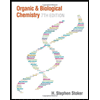 Organic And Biological ChemistryChemistryISBN:9781305081079Author:STOKER, H. Stephen (howard Stephen)Publisher:Cengage Learning,
Organic And Biological ChemistryChemistryISBN:9781305081079Author:STOKER, H. Stephen (howard Stephen)Publisher:Cengage Learning,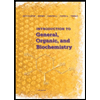 Introduction to General, Organic and BiochemistryChemistryISBN:9781285869759Author:Frederick A. Bettelheim, William H. Brown, Mary K. Campbell, Shawn O. Farrell, Omar TorresPublisher:Cengage Learning
Introduction to General, Organic and BiochemistryChemistryISBN:9781285869759Author:Frederick A. Bettelheim, William H. Brown, Mary K. Campbell, Shawn O. Farrell, Omar TorresPublisher:Cengage Learning

General, Organic, and Biological Chemistry
Chemistry
ISBN:9781285853918
Author:H. Stephen Stoker
Publisher:Cengage Learning

Organic And Biological Chemistry
Chemistry
ISBN:9781305081079
Author:STOKER, H. Stephen (howard Stephen)
Publisher:Cengage Learning,

Introduction to General, Organic and Biochemistry
Chemistry
ISBN:9781285869759
Author:Frederick A. Bettelheim, William H. Brown, Mary K. Campbell, Shawn O. Farrell, Omar Torres
Publisher:Cengage Learning
07 Physical Properties of Organic Compounds; Author: Mindset;https://www.youtube.com/watch?v=UjlSgwq4w6U;License: Standard YouTube License, CC-BY